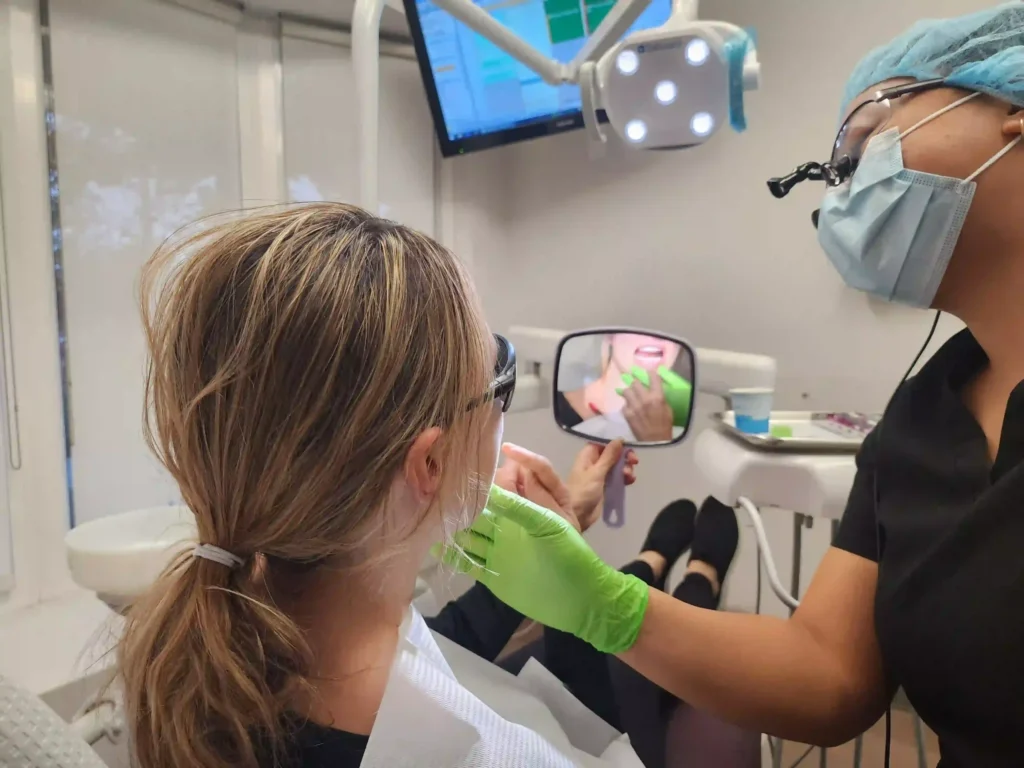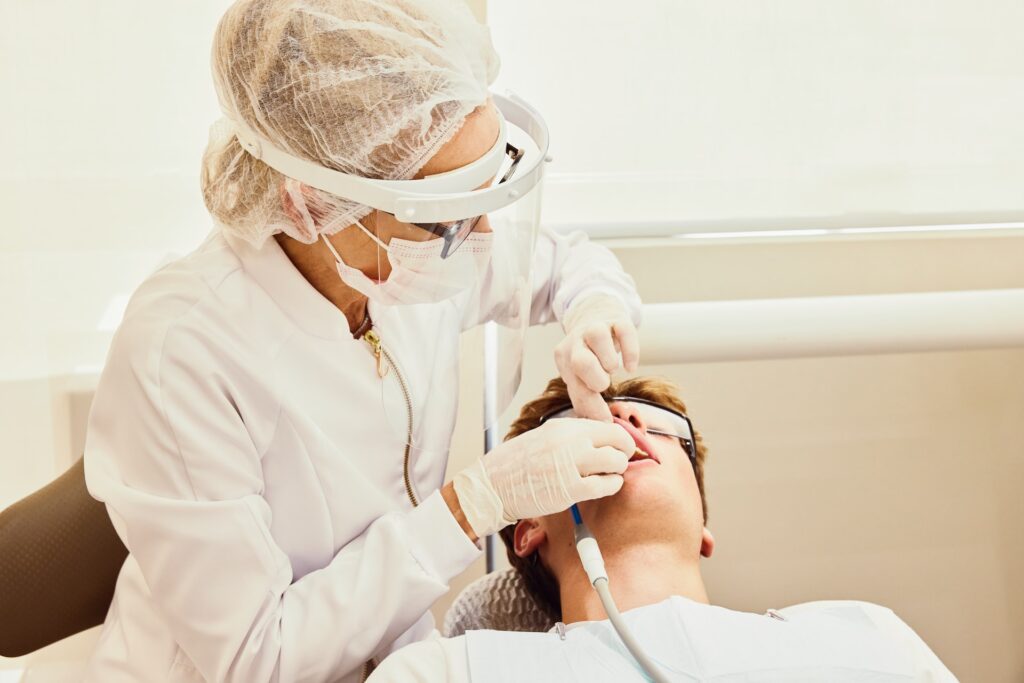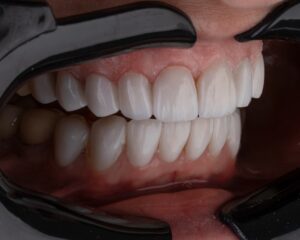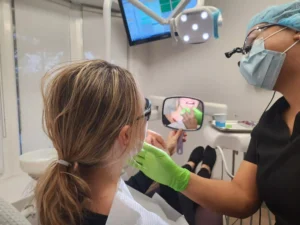Sedation dentistry helps patients relax during common dental procedures. It involves the use of medication to provide a calming experience.
Sedation dentistry caters to those with dental anxiety or a low pain threshold, ensuring a stress-free visit to the dentist. This service ranges from mild sedatives for relaxation to deeper options that can induce sleep. Known for enhancing patient comfort, sedation options include nitrous oxide, oral sedatives, and intravenous drugs.
Tailored to patient needs and the complexity of dental work, it enables safe and efficient dental care. Embracing this approach can transform a daunting dental visit into a serene and manageable health routine, allowing individuals to receive necessary treatments without the burden of fear. Dentists trained in sedation techniques prioritize safety and patient well-being, making modern dental care accessible to everyone.

The Benefits Of Sedation Dentistry
Embarking on a dental journey can often be daunting, but sedation dentistry is rapidly transforming patient experiences worldwide. This innovative practice melds modern dentistry with the soothing effects of sedation, offering a myriad of benefits designed to alleviate concerns and enhance overall dental care. From calming nerves to streamlining complicated procedures, sedation dentistry is a game-changer for patients and dentists alike.
Reduced Anxiety And Fear
Visiting the dentist can trigger stress for many individuals. Sedation dentistry counters this by creating a serene and relaxed environment. By administering safe, controlled sedatives, patients achieve a tranquil state, diminishing apprehension and leading to a more positive dental experience. This approach not only makes the visit less stressful but also encourages regular dental care, crucial for long-term oral health.
Pain Management And Comfort
Pain is a significant deterrent that keeps people from seeking necessary dental treatment. Sedation dentistry addresses this head-on by offering superior pain management solutions. Various levels of sedation, from mild to moderate and deep, can be tailored to the individual’s comfort and the nature of the dental procedure. The result is a painless and comfortable session, allowing patients to undergo even the most intensive treatments with ease.
Time And Efficiency
- Enhanced Cooperation: Sedatives promote patient cooperation, enabling dentists to work more efficiently.
- Reduced Movement: Patient fidgeting and movement can hinder progress; sedation keeps this to a minimum.
- Multiple Procedures in One Visit: With sedation, it’s possible to combine several treatments into a single appointment, saving valuable time.
Sedation dentistry makes lengthy and complex procedures more manageable, often reducing the number of visits required and allowing for a more streamlined treatment timeline. This efficient approach benefits not only the patient’s schedule but also accelerates the journey to a healthier smile.
Types Of Sedation Dentistry
Exploring the world of dentistry, one can’t help but notice the advancements in patient comfort through sedation dentistry. It’s become a cornerstone for patients who experience anxiety or fear about dental procedures. There’s a spectrum of sedation levels available to cater to individual needs, ensuring a calm and pain-free experience. In this section, we’ll delve into the common types of sedation dentistry used today.
Oral Sedation
Oral sedation is a popular choice for its ease of administration. Patients simply take a pill before the procedure. Depending on the dose, the sedation can range from minimal to moderate. For those who take a larger dose, it’s common to become drowsy enough to fall asleep, yet they can be awakened with a gentle shake.
Inhalation Sedation (nitrous Oxide)
Nitrous oxide, also known as laughing gas, is inhaled through a mask over the nose. It helps patients relax and wears off quickly after the mask is removed. This type of sedation allows patients to drive home after the procedure, making it a convenient option for those with busy schedules.
General Anesthesia
General anesthesia is the most profound level of sedation where patients are in a deep sleep throughout the procedure. They will have no memory of the treatment and will not feel any pain. It’s often reserved for extensive dental surgeries or patients with significant dental phobias. Post-procedure, patients will need time to recover and must arrange transportation as driving is not an option immediately following.
Who Can Benefit From Sedation Dentistry
At the heart of personalized dental care is a deep understanding that every patient’s needs are unique – especially when managing comfort during dental procedures. Sedation dentistry has emerged as a transformative approach for many patients who might otherwise avoid important dental care due to fear, discomfort, or medical conditions. Discover if you or a loved one could reap the benefits of this gentle, calming dental solution.
Dental Phobia And Anxiety
It’s no secret that dental appointments can evoke fear in many individuals. Fears ranging from mild nervousness to severe dental phobia can prevent necessary care, compromising dental health. Sedation dentistry provides an effective solution for those who experience:
- Anxiety when thinking about dental instruments
- Stress at the thought of sitting in the dentist’s chair
- A history of traumatic dental experiences
- General apprehension toward dental procedures
Safe and controlled sedation options offer a soothing experience, encouraging patients to receive regular care without anxiety.
Sensitive Gag Reflex
A sensitive gag reflex can transform simple dental procedures into difficult challenges. This reflex is a natural defense mechanism, but for some, it is overly sensitive, leading to discomfort during even basic treatments. Sedation dentistry offers respite by:
- Minimizing the sensation that triggers the reflex
- Allowing the patient to relax, reducing involuntary responses
- Enabling the dentist to perform necessary procedures efficiently and comfortably
Complex Dental Procedures
Some dental procedures are more intricate and lengthy than others, which may necessitate advanced pain management strategies. Sedation dentistry is particularly advantageous for:
| Procedures | Benefits of Sedation Dentistry |
| Wisdom teeth extraction | Counteracts discomfort and keeps the patient calm during extended surgery |
| Dental implants | Alleviates the intimidation factor of invasive surgery, ensuring relaxation |
| Root canal therapy | Assists in managing pain, allowing for a smoother procedure |
Through sedation, patients can experience a less daunting and more comfortable procedure, enabling them to undergo complex dental work without undue stress.
Safety And Considerations
Ensuring the safety of patients is paramount in any dental procedure, and sedation dentistry is no exception. With the proper protocols in place, sedation dentistry can be a serene and secure option for those seeking a stress-free dental experience. Key safety considerations hinge on thorough pre-sedation screening, meticulous monitoring during the procedure, and awareness of potential risks and complications. Here, we’ll delve into these critical areas to provide a comprehensive understanding of what patients and dentists need to know before embarking on sedation-assisted treatment.
Pre-sedation Screening
Pre-sedation screening is a critical step designed to identify any underlying health issues that may affect the patient’s response to sedation dentistry. The screening process typically includes:
- Medical History: A review of the patient’s past and current health concerns, including allergies, medications, and previous reactions to sedatives.
- Physical Examination: An assessment to evaluate the patient’s physical readiness for sedation dentistry and any potential risk factors.
- Pre-procedure Instructions: Clear communication with the patient regarding fasting requirements and adjustments to routine medications.
Monitoring And Sedation Levels
While a patient is sedated, constant vigilance is essential to ensure their well-being. Dental professionals use advanced monitoring equipment to track the patient’s vital signs, including:
- Heart Rate: To detect any abnormal rhythms or rate changes.
- Blood Pressure: To maintain it within a safe range.
- Oxygen Saturation: To ensure sufficient oxygen levels in the bloodstream.
Dentists also calibrate sedation levels to match the specific needs of each patient, ranging from mild sedatives to induce relaxation to deep sedation dentistry for more complex cases.
Risks And Complications
Although sedation dentistry is generally safe, as with any medical procedure, it carries certain risks and potential complications. These include but are not limited to:
| Risk Factor | Potential Complication |
| Over-sedation | Respiratory distress or excessive drowsiness post-procedure |
| Allergic Reactions | Reactions to sedative agents, ranging from mild to severe |
| Individual Response | Unpredictable responses based on unique patient physiology |
Dentists and dental staff are trained to respond swiftly to any such events, mitigating risks and ensuring patient safety.
The Process Of Sedation Dentistry
Sedation dentistry is an innovative approach to ensuring a patient’s comfort and relaxation during dental procedures. The method is ideal for individuals who experience anxiety or fear when visiting the dentist. Understanding the process from the initial consultation to post-sedation recovery reassures patients, allowing them to receive necessary dental care with minimal stress.
Initial Consultation
Before embarking on the journey of sedation dentistry, patients undergo a thorough initial consultation. This meeting is crucial, as it offers the dentist an opportunity to assess the patient’s medical history, discuss concerns, and determine the most appropriate form of sedation. Patients should be ready to:
- Boldly communicate their dental and medical history
- Discuss any medications they are currently taking
- Express their level of dental anxiety
Ensuring safety and customizing the experience are paramount during this stage.
Customized Sedation Plan
Following the initial consultation, a customized sedation dentistry plan is crafted to align with the patient’s specific needs. Key considerations in this plan include:
- The complexity and duration of the dental procedure
- The patient’s anxiety levels and medical history
- Preferences regarding sedation levels
This tailored approach can range from minimal sedation to help patients relax, to deep sedation where patients are on the brink of consciousness but can still be awakened.
Post-sedation Recovery
The final step in the sedation dentistry process is post-sedation dentistry recovery. Once the dental procedure is complete, the sedation begins to wear off. It is normal for patients to feel drowsy or even fall asleep during the procedure; therefore, immediate post-care includes:
| Activity | Guidelines |
| Monitoring | Patients are monitored until they regain full awareness. |
| Transportation | Patients will need someone to drive them home. |
| Aftercare Instructions | Patients receive guidelines for home care to ensure a smooth recovery. |
Rest is advised for the remainder of the day to allow the effects of the sedation to completely dissipate. Many patients return to their normal routines by the following day.
Finding A Sedation Dentistry Provider
If the thought of visiting the dentist leaves you feeling anxious, sedation dentistry can turn a stressful experience into a relaxed one. But before you can sink into that comfortable chair, selecting the right sedation dentistry provider is crucial. This process involves thorough research and understanding of each candidate’s qualifications, what other patients have to say, and how the office handles communication and accessibility.
Qualifications And Experience
Finding a provider with an impeccable record is essential for a safe and successful sedation dentistry experience. Ensure the dentist is certified and has extensive experience in sedation techniques. Licenses from recognized dental boards or associations offer a layer of security and trustworthiness.
- Certification in sedation dentistry
- Memberships in professional dental associations
- Ongoing education in sedation practices
- Hands-on experience with various sedation methods
Patient Reviews And Testimonials
Insights from others who have undergone sedation dentistry are invaluable. Positive reviews and testimonials reflect patient satisfaction and can reveal a lot about the provider’s approach to patient care. Look for consistent themes in feedback to gauge reliability and quality of service. A lack of testimonials or numerous negative reviews can serve as red flags.
- Search for reviews on independent platforms
- Evaluate the overall sentiment from patient feedback
- Assess the detail in testimonials to better understand patient experiences
Accessibility And Communication
The ease with which you can schedule appointments and communicate with your dental office represents a fundamental aspect of quality care. A sedation dentistry provider should be accessible, both in terms of location and availability. Clear, open communication regarding procedures, risks, and pre-and post-operative care plays a significant role in ensuring a patient’s peace of mind.
| Criteria | What to Look For |
| Office Location | Convenient and easy to reach |
| Office Hours | Flexible and accommodating |
| Communication | Clear explanations and open dialogue |
| Emergency Care | Availability for urgent concerns |
When you evaluate these elements in your search for a sedation dentistry provider, you set the stage for a comfortable and successful common dental procedure. Taking the time to find the right professional can make all the difference in your healthcare journey.
Sedation Dentistry For Pediatric Patients
Sedation dentistry has revolutionized the way we approach dental care, especially for our younger patients. Dental visits can be intimidating and often frightening experiences. Addressing this fear with caring and compassionate solutions is where sedation dentistry for pediatric patients comes into play. By utilizing various sedation techniques, dentists can create a more relaxing and stress-free environment, enabling children to receive the necessary dental care without enduring anxiety.
Addressing Childhood Dental Anxiety
Dental anxiety in children is not only common but also a significant hurdle in ensuring early oral health care. It’s essential to address these fears, as negative experiences can lead to long-term dental avoidance. Sedation dentistry offers a pathway to reducing these anxieties by providing a calm atmosphere during dental treatments, making it a critical component of pediatric dental care.
Pediatric Sedation Options
- Nitrous Oxide: Also known as ‘laughing gas’, this is a mild sedative that helps children relax during dental procedures.
- Oral Sedation: Involves giving the child a pill or liquid to ingest, resulting in drowsiness and decreased anxiety.
- IV Sedation: Administered directly into the bloodstream, this type of sedation works quickly and its depth can be continuously adjusted.
- General Anesthesia: Used in more extensive procedures, it renders the child completely unconscious.
The choice depends on the complexity of the dental procedure, the child’s level of anxiety, and overall health. Pediatric dentists, along with anesthesiologists, work together to select the safest and most effective option for each child.
Pediatric Dental Sedation Safety
The safety of the child is the utmost priority for any form of sedation. Pediatric dentists undergo extensive training in sedation techniques suitable for children of all ages. Extra precautions are taken when sedating children, including:
- Conducting thorough medical history reviews to avoid any potential risk factors.
- Choosing the minimal effective dose to achieve the desired effect.
- Continuous monitoring of the child’s vital signs throughout the procedure.
- Having emergency procedures and equipment ready, should they be needed.
Accredited dental practices follow stringent guidelines and are equipped with the necessary tools to ensure that pediatric dental sedation is administered safely and effectively.
Cost And Insurance Coverage
Understanding the cost of sedation dentistry alongside insurance coverage is crucial for patients needing a comfortable dental experience without financial stress. Sedation options vary widely, and so do their costs. Fortunately, many dental practices and insurance companies recognize the importance of a pain-free dental visit. They offer various options for coverage and payment that can make sedation dentistry accessible for a broader range of patients.
Factors Affecting Cost
The cost of sedation dentistry is influenced by several factors:
- Type of sedation: Costs differ between nitrous oxide, oral sedation, and IV sedation, with general anesthesia typically being the most expensive option.
- Dentist’s experience and location: Providers in urban areas or those with specialized expertise may charge more.
- Dental procedure complexity: More invasive treatments requiring longer sedation periods might increase the overall price.
- Duration of sedation: Longer procedures require more sedative agents and monitoring, thus affecting the cost.
- Geographical location: Prices can vary significantly from one region to another based on the cost of living and operating expenses.
Insurance Coverage And Reimbursement
Many patients wonder, “Does insurance cover sedation dentistry?” The answer largely depends on your dental insurance plan and the reason for sedation. Some insurers classify sedation as a non-essential service, whereas others might cover it under specific conditions:
- Medical necessity: If sedation is necessary for a safe and effective dental procedure, insurance may provide coverage.
- Policy specifics: Each insurance plan has unique stipulations regarding what types of sedation are covered.
- Pre-authorization: Obtaining approval before the procedure can significantly improve the likelihood of reimbursement.
It’s essential to check with your dental insurance provider to understand your coverage for sedation dentistry.
Common Myths And Misconceptions
A whirlpool of myths and misconceptions often clouds the judgment of many patients, deterring them from experiencing the benefits of this medical advancement. This section demystifies some of the most common myths, shedding light on the realities of sedation dentistry to alleviate concerns and empower patients with accurate information.
Sedation Dentistry Risks And Dangers
One prevalent myth is that sedation dentistry is fraught with extreme risks and dangers. While all medical procedures come with potential risks, sedation in dentistry is generally safe when administered by a qualified professional. Common side effects, such as drowsiness, are typically short-lived and manageable. Here are the facts:
- Monitoring: Patients are closely monitored during sedation, ensuring safety throughout the procedure.
- Training: Dentists who use sedation have undergone extensive training to manage sedation safely.
- Customization: The type and level of sedation are tailored to the patient’s individual needs and health profile.
Sedation Dentistry Addictiveness
Another misconception is the fear of becoming addicted to the sedation used during dental procedures. Rest assured, the agents used in sedation dentistry are not addictive when used as directed for dental treatments. This misunderstanding confuses temporary physical dependence with long-term addiction.
- Sedatives are only used during procedures and are not prescribed for long-term use.
- The doses are carefully controlled to prevent any abuse potential.
- Follow-up care ensures patients do not experience withdrawal symptoms post-treatment.
Inaccuracy of Sedation Dentistry
Inaccuracy Of Sedation Dentistry
Some believe that sedation dentistry can lead to inaccurate results, suggesting that a sedated patient might compromise the quality of dental work. However, this could not be further from the truth. Sedation often enhances the precision of dental procedures as it allows the patient to remain still and calm, enabling the dentist to work more effectively.
| Myth | Reality |
| Sedation causes dental inaccuracy | Sedation enhances dental procedure precision |
| Patients are completely unconscious | Many forms of sedation keep the patient awake but relaxed |
Personalized Experiences And Testimonials
Dental visits can trigger anxiety for many, but sedation dentistry has revolutionized the patient experience by providing personalized comfort and relaxation. Real people with real dental fears have transformed their views on dental health, thanks to the customized sedation options available. Through patient success stories, insights into overcoming dental fear, and the positive impact on oral health and well-being, it’s clear that sedation dentistry isn’t just about a procedure—it’s about changing lives.
Overcoming Dental Fear
Confronting dental anxiety is a monumental step for many. Sedation dentistry provides an avenue for patients to receive care without the paralyzing fear that once held them back. Personalized sedation methods allow for a variety of comfort levels, ensuring each visit is approached with the patient’s mental and emotional well-being at the forefront.
- Minimized fear and anxiety during procedures.
- Adapted sedation levels to suit individual needs.
- Empowerment to seek regular dental care.
Improved Oral Health And Well-being
Maintaining a healthy mouth is integral to overall well-being, and sedation dentistry removes the barriers that prevent routine dental visits. When the fear dissipates, patients discover the road to improved oral health is not only achievable but also comfortable.
| Before Sedation | After Sedation |
| Irregular visits due to anxiety | Regular check-ups and cleanings |
| Progressing dental issues | Proactive management of oral health |
| Emotional stress and discomfort | Feelings of calmness and control |
Patient testimonials often highlight the profound difference in quality of life, citing better sleep, more confidence, and the joy of a pain-free smile. Ultimately, sedation dentistry not only fosters healthier teeth and gums but also contributes to a happier, stress-free lifestyle.
Frequently Asked Questions On Sedation Dentistry
What Is Sedation Dentistry?
Sedation dentistry uses medication to help patients relax during dental procedures. It’s ideal for those with dental anxiety, ensuring a comfortable experience.
How Safe Is Dental Sedation?
Dental sedation is generally safe when administered by experienced dentists. They monitor vital signs to ensure patient safety throughout the procedure.
What Types Of Dental Sedation Are Available?
Several types of dental sedation are available, including nitrous oxide (laughing gas), oral sedatives, and IV sedation. The choice depends on the procedure and patient comfort level.
Can I Eat Before Sedation Dentistry?
Eating before sedation dentistry is commonly restricted, especially for IV or oral sedation. Dentists usually advise fasting for a certain period before the appointment.
Conclusion
Embracing sedation dentistry can transform your dental visits. It offers a smooth, anxiety-free experience, ensuring comfort for even the most nervous patients. Remember, a calm procedure is a step toward optimal oral health. Trust in sedation to ease your dental journey, and always consult with your dentist to find the best option tailored for you. Brighter smiles await with stress-free dental care.







